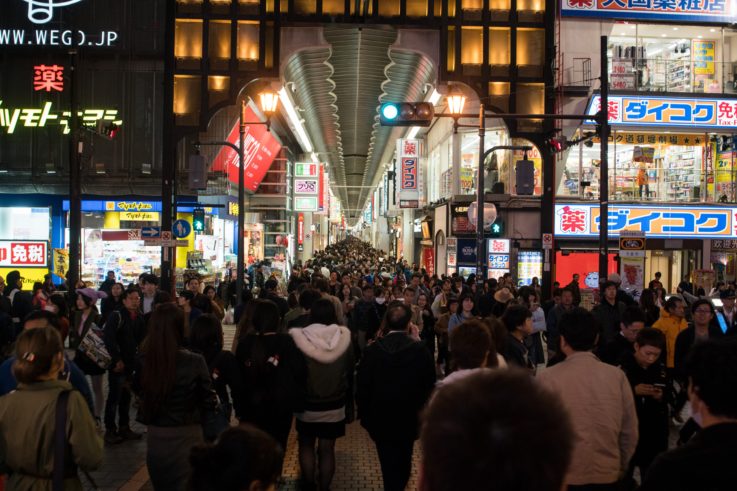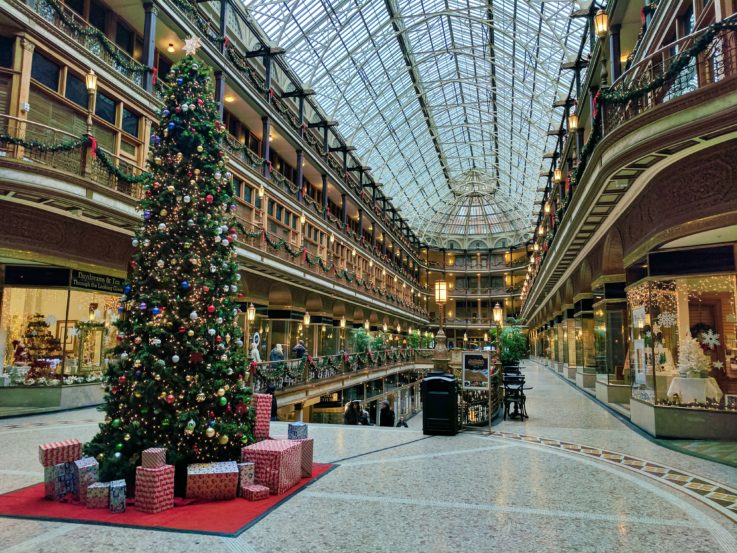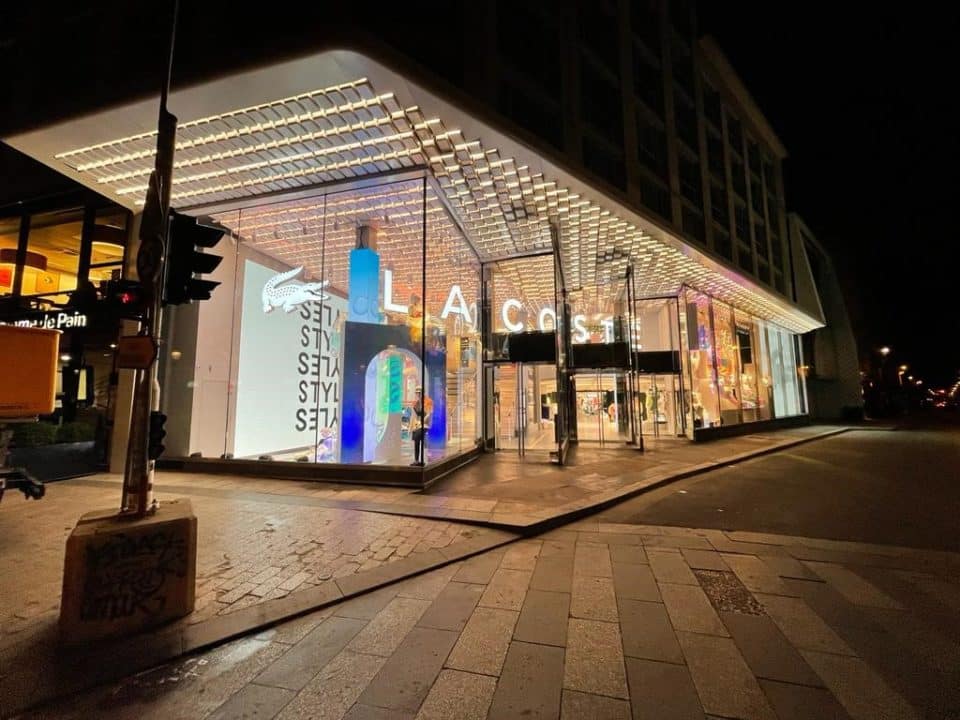5 things retailers need to know about holiday shopping in 2020

Christmas comes earlier every year doesn’t it?
This familiar sentiment that has taken on new relevance in 2020. With the Covid-19 pandemic having already dominated much of the year, it’s no surprise that it’s also impacting the upcoming holiday season.
The result is that we’ve moved into a holiday shopping mindset even earlier than usual. Part of this is practical as retailers and shoppers alike look to tackle the season in a safe way.
But in a year of challenges, cancelled plans and the new normal, the major holidays offer a bright spot. They’re something to look forward to.
Consumers are keen to tap into this good feeling. Many see Christmas as a light at the potential end of the coronavirus tunnel. It’s a goal to work towards in the quest to get back to normality even as guarantees that we’ll be able to celebrate as usual look thin on the ground.
The last quarter of the year is also usually a bright spot for retailers when it comes to sales. This year can still be the same as long as retailers bear in mind these 5 big holiday shopping trends for 2020.

1. Shopping will start earlier than ever
For many holiday shopping has already begun.
The British Retail Consortium (BRC) and KPMG reported that UK retail sales grew 6.1% in September with the BRC noting that this suggests customers are starting their Christmas shopping earlier.
In its recent Holiday Shopping Intention Survey, the ICSC found that two-thirds of US shoppers surveyed said they would start their holiday shopping before Thanksgiving.
There are a number of factors driving this early buying. One is that customers are looking to shop in the safest way possible which means avoiding last-minute shopping crowds.
Another factor is the wish to avoid desired items becoming out of stock. The empty shelves of earlier in the year will be haunting many shoppers when it comes to securing the gifts they want.
Retailers have already experienced supply chain challenges this year as a result of Covid-19. Among these were longer delivery periods for online purchases as ecommerce sales shot up and logistics firms struggled to cope.
It’s almost inevitable that we’ll see delays again as we move closer to the big holiday dates. The ongoing pandemic will push more holiday shopping online as a result of restrictions and shopper safety concerns.
PwC’s 2020 US Holiday Outlook reports that 61% of US shoppers surveyed say they will do most of their holiday shopping online.
It’s also a fact that the Christmas period already sees an uplift in the volume of post. Couple all this with the fact that bad weather could potentially disrupt deliveries, and it’s likely delivery services are going to be oversubscribed – especially as everyone is trying to get their packages where they need to go by the same date.
Salesforce is predicting that parcels shipped will exceed capacity globally by 5% between mid-November and Boxing Day. This equates to 700 million gifts potentially not arriving on time.
In order to try and head off such an eventuality, we’re seeing delivery services encouraging customers to buy and send gifts as early as they can. Australia Post has already started warning customers of an early cut-off date in December for guaranteed Christmas delivery.
While earlier shopping can help retailers head off customers complaints about things not arriving in time, there is another associated benefit for retailers. The earlier a customer buys the more likely they are to pay a higher price for their purchase.
That is to say that the security of buying early to know they’ve got what they want means paying what that product is priced at now rather than waiting to see if it goes down in price or if a competitor might reduce it.
It’s essential that you accommodate this longer buying period in your inventory management to ensure you can continue to serve customers right through this quarter. If you haven’t got stock in early enough for proactive shoppers they’ll go elsewhere. If you don’t plan your stock levels carefully you could burn through your supplies early on and put money on a competitor’s table.
You also need to consider your delivery capabilities and keep customers informed of deadlines for Christmas arrival. Making use of fulfilment options such as ship from store can drive down the cost of deliveries and get items to shoppers faster.
There’s also scope for you to think outside the normal delivery channels. We’ve seen retailers partner with firms like Deliveroo and Uber earlier in the year to ease ecommerce congestion and that is likely to continue into the holiday season.

2. Spending may be stable but concentrated
Another thing to consider is that consumers aren’t just dealing with a global pandemic but the associated economic crises.
In the UK, the Office for National Statistics reports that the UK unemployment rate is at its highest level in three years. Redundancies are also at their highest level since 2009. Not to mention that the country is in recession for the first time in 11 years. By no means is it the only country facing these challenges either.
Many industries have been hard hit by Covid-19 and the associated restrictions, including retail. This has impacted workers in all sorts of ways from temporary closures to companies ceasing trading to furloughing and reduced hours.
For consumers, uncertainty around job security and the long-term impact of Covid-19 means that they’re more conscious than ever of their spending.
However, it seems that this isn’t necessarily impacting hugely on their plans for the holidays. The ICSC is forecasting a 1.9% increase in year-on-year spending over the holiday season.
CBRE echoes this in its 2020 US Retail Holiday Trends Guide with forecasts of holiday sales growth of under 2%.
While this isn’t a significant increase compared to previous years, it is still a welcome uplift.
Meanwhile, PwC paints a slightly different picture in its recent 2020 US Holiday Outlook. While it reports that 55% of US shoppers will spend more or the same as they did last year, 40% say they will spend less.
As already noted, one knock-on effect of this is that shoppers are starting their holidays buying earlier. This enables them to spread the cost over a longer period.
PwC also notes that 60% of its surveyed US shoppers say they will visit fewer shops than normal in their holiday buying.
This means that retailers are facing a situation where customers are potentially spending less overall but are also spreading that money across fewer retailers.
Value is going to a key driving factor of these purchases. The annual Black Friday and Cyber Monday sales are likely to be even busier than ever as a result.
However, value doesn’t solely mean sales and discounts. For many shoppers, convenience and efficiency are going to be particularly valuable this year. Retailers who can deliver this are more likely to secure a piece of the spending pie.
It’s important that you look at customer journeys and how you can fulfil them. Are you offering a full range of fulfilment options (buy in-store, click and collect, ship from store, home delivery etc)? Are you selling to customers through their main buying channels (social media, physical stores, ecommerce etc)?
Essentially is it easy for customers to a) buy what they want and b) get it how they want when shopping with you?

3. Covid-secure shopping is a must for physical retail
There’s no doubt that Covid-19 is influencing a lot of this year’s holiday shopping habits.
In PwC’s 2020 US Holiday Outlook, 55% of US consumers said that the pandemic is their top concern about holiday shopping.
As such, the focus is on buying what they want in the safest and most efficient way possible. Ecommerce is an obvious winner here due to its contactless nature.
However, for many shoppers a mix of online and offline channels are likely to play a part in their holiday buying. The ICSC says that 81% of customers in its survey will shop in physical stores during the holiday season.
It’s important that you prove to customers that shopping with you in person is a safe option. 88% of those surveyed said that Covid-19 secure shopping procedures were essential for buying in-store.
For many retailers this means building on the processes already in place such as masks, social distancing and offering hand sanitiser.
There are other ways to make customers feel safer when shopping such as limiting the number of people who are in store at any one time. One-way systems through stores or doors allocated to entering and exiting could make a comeback.
Could you reconfigure your space to put less stock on the shop floor? For example, you could have one or two of each item on display for customers to see and learn about. If they choose to buy, then you could pick their order from untouched stock out back.
Offering bookable shopping slots and personal shopper appointments can help customers feel reassured about buying in-store, while also maximising the value of their visit through help from staff. You could offer a Christmas shopping service where you help customers buy for everyone on their list.
In the 1994 film Miracle on 34th Street, the real Santa is working as a department store Santa for the fictional Cole’s. He tells parents where they can get gifts for their children at the cheapest price – even if it’s not from his employer.
While we don’t suggest you send customers to your competitors, it’s worth considering whether you can partner with non-competitive complementary businesses to help your customers get the things they want.
Click and collect and curbside collection have already seen huge increases in uptake as a result of the pandemic. This will continue into the holiday period as customers look to avoid the costs and potential delays of buying online while minimising contact with others.
ICSC says 53% of US shoppers surveyed will make use of click and collect and curbside collection over the holiday period.
A survey by BlackFriday.com and SurveyGizmo also saw 50% of respondents say they plan to use curbside collection and click and collect services compared to last year.
If you haven’t already nailed these services, they should be your top priority, or you could be missing out on a huge number of potential sales. If this seems like too expensive or time-consuming a task, bear in mind that Dick’s Sporting Goods implemented a basic form of curbside collection in just two days at its stores.

4. Return periods will be longer
A knock-on effect of holiday shopping starting earlier than ever is that retailers may need to adjust their returns policy.
We’re already seeing retailers like John Lewis and Amazon saying they will refund gifts bought from early October to the 24th December. That’s essentially an entire quarter.
Therefore, retailers who adopt a similarly long returns period need to bear in mind that a sale they make in October isn’t a guaranteed thing and could be being refunded in January.
Not only do you need to be considering how long you will accept returns for, but also how you will facilitate them.
We don’t yet know how things will look in January when it comes to Covid-19 or what restrictions may be placed on retailers.
As such, we also can’t predict how many shoppers will choose to visit stores in person in that period. Many may choose the security of shopping the sales online.
This same feeling may also extend to returning products in-store, especially if the recipient doesn’t live near that retailer’s store.
As such, shoppers are likely to be factoring returns policies into their choice of where to buy their gifts from.
Retailers should be considering how they can make life as easy as possible for shoppers with returns, including potential coronavirus restrictions.
For example, can customers they bought in store by post as they do with ecommerce purchases? Or do they have to physically go to the store?
There is the potential for retailers to make better use of digital receipts around returns. This could be as part of facilitating returns online, or to share with gift recipients for easier refunds.
If customers are coming into store to make returns, do you have a dedicated space for this? Could you install a drop-off point outside the store or at the entrance, so they don’t have to enter the space if they don’t want to?
Even ecommerce retailers have room to improve their returns set-up. Can you offer customers an array of options for sending back their parcel (if you don’t already)? This may include national postal services as well as courier drop-off points.
There’s also room to explore partnerships with locker companies where customers can drop off their items in a secure locker to be collected and sent back to the retailer. Fast fashion retailer Missguided already operates a similar set-up with InPost.
If you’re a pure-play retailer you could also explore partnering with a retailer with physical stores to enable your customers to drop off their returns in-store. In the US Kohl’s has been facilitating Amazon returns in its stores for a number of years now.
Likewise, we’ve seen John Lewis partner with grocery chain Co-op in the UK to expand its click-and-collect locations – why not returns points as well?
It’s also important that you communicate with customers regarding how long a refund may take to come through bearing in mind that there could be greater pressure on delivery services in January as well if high numbers of returns are being made.

5. More gifts will be delivered
While we’re all hopeful of being able to spend time with friends and family over the Christmas period, there is a very real possibility of lockdowns and other restrictions causing us to be apart more than we are together.
This will make the exchanging of gifts more difficult than in past years.
As such, it’s likely that more people will opt to post presents to one another so they can be sure they have them ready for the big events.
One way retailers can build on this is to offer more gift services. This doesn’t just mean letting online shoppers order gifts to be sent straight to the recipient with a gift note. There is a huge opportunity for retailers to offer gift packaging services that see presents sent out perfectly wrapped and ready to go in exchange for a fee.
This same service can also be offered in-store with staff wrapping up purchases and having them shipped to the recipient.
In turn, retailers also need to consider the potential for returns and how to facilitate this. Ideally the recipient should receive a gift receipt with the ability to exchange or get a refund or credit for an unwanted purchase without involving the sender or having to send it back to them.

Conclusion
There’s no doubt that the holiday season is going to look a little different for 2020.
However, it seems that Christmas is far from cancelled for customers. In fact, after a long and difficult year there will be many who are planning to go all out to celebrate, including selecting the perfect gifts for friends and family.
It’s vital that retailers are plugged into the wants and needs of customers during this time. Convenience, efficiency and value are the big tentpoles of pandemic holiday shopping. Get these right and things might turn out merry after all.
Need help with quick holiday retail solutions? Our retail consultants can connect you with leading companies that can boost your operations fast – get in touch to find out more.



